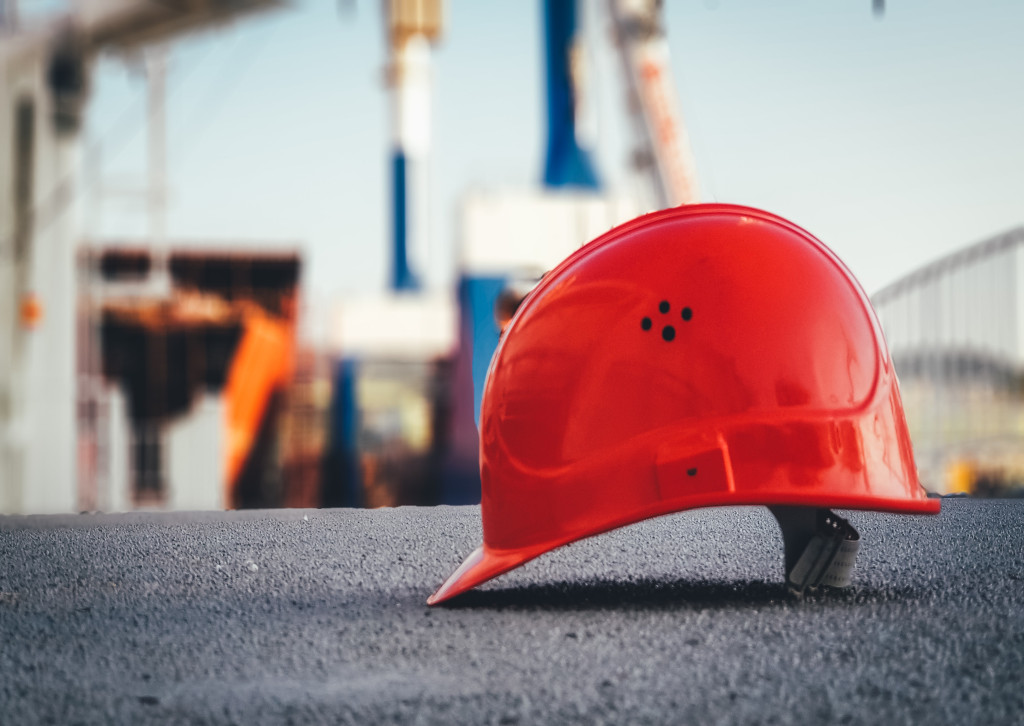
Due to its complexity, much of the subject matter concerning the economy requires detailed editorial commentary, often supported by relevant tables and graphs.
![]()
Did you miss our previous article…
https://www.cmcconstruction.net/?p=894


Due to its complexity, much of the subject matter concerning the economy requires detailed editorial commentary, often supported by relevant tables and graphs.
![]()
Did you miss our previous article…
https://www.cmcconstruction.net/?p=894


Learn some of the cool tips, tricks and things you can do in Spectrum — directly from our clients.
Did you miss our previous article…
https://www.cmcconstruction.net/?p=891


Covid-19 has changed the way we live and work across the globe. For the construction sector in Europe, the pandemic has brought about a big shift in attitudes towards digital innovation and traditional ways of working. In this series, we explore how the Covid-19 pandemic has affected the industry in Europe and what this means for the outcomes delivered.
It’s clear that the Covid-19 pandemic has impacted – and continues to impact – each country in unique ways. As well as contending with different waves of the disease, every government has set their own regulations for construction industry activities.
For example, in Ireland non-essential construction sites remained closed throughout much of early 2021; by contrast, sites have been allowed to open in the UK, but due to self-isolation measures, some projects are now being delayed by staff shortages.
In the Nordics, construction industries have been less severely impacted by the pandemic than some other European countries. Although some people have worked remotely at times, there have been a smaller number of lockdown closures.
As a result, between February and April 2021, construction activity in Denmark and Sweden actually increased. Despite a year of challenges, by April Finnish companies had returned to pre-crisis activity levels.
In fact, construction in the Nordics is now growing rapidly, to the point of becoming overheated. Construction professionals in both Denmark and Sweden say the single biggest risk on their projects is time constraints and the need to make urgent decisions[ET1] .
Beyond the pandemic, there is change ahead. Each country has committed to taking a leading role in the global green recovery. There will be pressure to work more efficiently and deliver greener builds, prompting changes for businesses.
In such a fast-moving industry, how can Nordic construction companies improve their operations, while preparing for further changes ahead?
Winning new business is of course a core part of construction success. But organisations in the Nordics are missing out on a key means of creating competitive advantage and winning more business – and that’s effective data management.
In most businesses, each project team decides on the processes and tools based on their specific needs. After the project, the data is rarely re-examined to gain insights and knowledge. In other words, businesses don’t have a strong learning loop – and can be liable to make the same mistakes again and again.
Implementing a common data environment and using business intelligence (BI) modules can enable organisations to gain a more holistic view of their data, in a way that’s effective and sustainable. By not only capturing, but really using, past data, organisations can find opportunities to improve, gain a competitive advantage and ultimately win more business.
Delivering quality in a construction project comes down to three things: people, processes and tools. Unfortunately, it’s clear that some employees in the Nordics need a mindset shift. In the past, it was accepted wisdom that in construction you learned by getting things wrong – and many professionals acquired their skillset in this way.
These people can be reluctant to change and act as a blocker to adopting technology. For example, 40% of Norwegian construction firms say the reason they don’t have a data strategy is a lack of support from the leadership team and wider organisation[ET2] . Changing attitudes will be key for many businesses.
Once the right people are on board, organisations must take a holistic approach to their processes and examine how they can be improved with technology. Many businesses have tended to focus on optimising individual tasks – for example, finding the best tool to support quality inspections.
But in fact, we’re now realising the value of linking all the phases of a project from ideas and design through to construction and handover. Collaborating more closely, from design to operations, will mitigate errors and improve quality – and of course, that depends on having the right digital tools.
To maintain quality, it’s vital that information can be shared and accessed in real-time, enabling teams to avoid errors and make the best decisions. Equally, it’s important to ensure that tools aren’t siloed – or the data will be too.
Finally, remember slowing down can be faster. It can be difficult given the frenetic pace of construction right now. Nonetheless, taking the time to follow quality control processes in full will save issues down the line, and there are digital tools to help teams do this more efficiently.
When it comes to finishing on budget, preparation is 80% of the work. However, when time is tight, organisations often rush to get underway before all the decisions and planning are complete. This is not an effective way to mitigate risk and manage costs; decisions made in earlier phases will have a long-lasting impact, and the later changes are made, the bigger the costs will be.
For example, think of Storebæltsbroen, a Danish bridge constructed using concrete and steel elements in the 1990s. The original design team estimated lifespans for each concrete element based on the predicted level of bridge traffic.
But ultimately, the bridge proved much more popular than predicted, lowering the lifespan of the concrete. By failing to consider operations, the team had missed the opportunity to design elements that could be easily replaced, which could have saved millions in future maintenance costs. Giving every stakeholder enough time to plan will significantly improve the process – and reduce costs for everyone involved.
Owners especially need to take a holistic view of their assets. As they will be responsible for managing the building long after the handover, owners should take responsibility for project data from the beginning of the project. This will lead to cost-savings over many years.
Given the very high levels of demand in Nordic construction right now, finishing on schedule – and working as efficiently as possible – is essential. Again, this starts with good planning. During the preconstruction phase, organisations should focus on the critical components that will make up most of the build and consider all the constraints that will apply.
Once the project is underway, the schedule should be updated in real time. Currently some organisations work on a weekly basis – but by the time changes are made, you might already be four days behind.
This is an even bigger issue if data related to the plan is split across multiple locations: for example, the schedule in MS Project, the budget in an Excel spreadsheet and the contractors in a resource management tool. Simply keeping everyone up to date with accurate information will take significant resource – and it will be easy to make errors.
Digital tools can enable teams to integrate their processes and data. Project managers can then visualise the impact of any changes across the whole project, making adjustments and sharing updates instantly. This can help Nordic construction firms to optimise their schedules in a very busy period.
Health and safety have formed a mandatory part of projects for many years – and new regulations are constantly being introduced to set higher standards. However, there is a tendency in construction firms to view these requirements as an inconvenient time-drain, particularly when schedules are tight. People filling in checklists on-site might question the value of these activities or rush to complete them.
We need to reconsider our approach to health and safety, to instead view these activities as a worthy time investment. By completing checks upfront, organisations can ensure the proper protections are in place – avoiding incidents, injuries and of course the counterproductive time delays that will result on the project. Likewise, these processes can capture errors that would otherwise cause issues and costs later in the project.
Importantly, digital tools can help checks to be completed more efficiently, as well as supporting collaboration – as the faster the communication between the relevant parties, the faster the error can be rectified.
All of this can contribute to a real mindset shift in construction. People who feel safe about where they work will be more engaged and productive. Altogether, we should consider health and safety as a means of being more efficient and effective in Nordic construction.
As Nordic construction businesses look to the future, getting the right people, processes and tools in place – not only within your organisation, but together with your collaborators – will be crucial. Organisations have been forward-thinking in their adoption of digital tools, but approaches have often been siloed and limited to a single function.
Relying on standalone solutions will prevent firms from winning business in the future. It’s only by using integrated platforms, that automate processes and fully leverage data, that organisations will be able to save time and money, capture errors before they occur and ultimately gain the competitive edge they need.
Now, it’s time to create integrated processes that will improve your business and support your project partners. This will enable you to make decisions based on real-time information and learn from past data. And remember, if digital technologies are used correctly, it isn’t a cost – it’s a means of enabling everyone in the industry to improve.
Learn more about connecting workflows, teams and data at every stage of the construction processes with Autodesk Construction Cloud here, or reach out to me directly.
Click here to read the European version of the FMI report.
The post The Changing Face of Construction in the Nordics appeared first on Digital Builder.
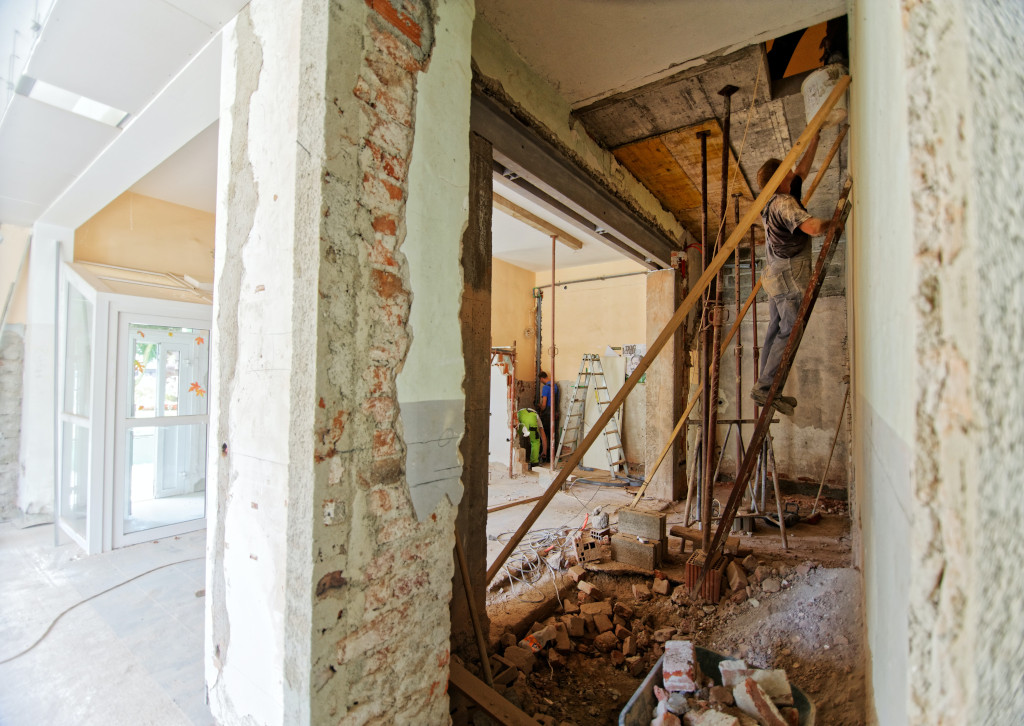
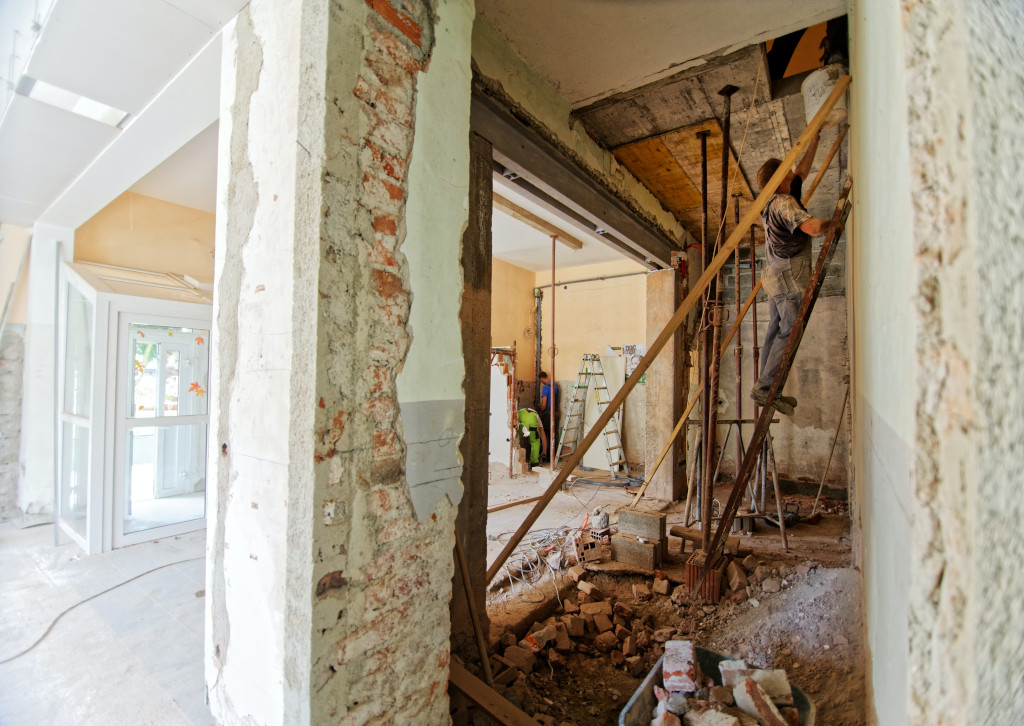
Being successful in construction isn’t just about a finished project. While completion is certainly important, the outcomes that you achieve during and after the project also matter a great deal.
Five essential construction KPIs to focus on improving are winning more business, minimizing costs, maximizing quality, optimizing project schedules, as well as promoting health, safety, and sustainability. Effectively delivering on these KPIs will result in short- and long-term success for everyone involved, which is why construction pros should strive to achieve them.
Our latest ebook, How Digitally Connecting Workflows Dramatically Improves 5 Key Construction KPIs, discusses how you can improve these KPIs by digitally connecting construction workflows. Download it for free.
DOWNLOAD FREE EBOOK
Many contractors want to win more business, and in today’s modern landscape, connected construction technology is one of the best tools you can have to achieve this outcome. When your workflows and systems are tightly integrated, you’re able to automate various tasks and be more efficient with your bids.
It also paves the way for better stakeholder engagement and collaboration. Connected construction technology keeps everyone on the same page, reducing issues with miscommunication.
In addition, a connected construction platform makes data more accessible. Information from different projects can be stored on one platform, so it’s easier to surface insights and analyze trends. This, in turn, can give you the information you need to make smarter bidding decisions.
Maintaining cost-effectiveness in projects is critical to success. Unfortunately, the majority of construction pros regularly run into cost-related issues. Research by Dodge and Autodesk found that 66% of general contractors incur additional costs from overtime and second shifts on at least three-quarters of their projects.
Connected construction helps solve budget issues for contractors in a number of ways. A robust platform can provide detailed reporting, allowing you to produce accurate forecasts, obtain better cost controls, and improve subcontractor qualification.
Not to mention, the enhanced collaboration between all parties greatly reduces inefficiencies and helps stakeholders resolve problems quickly.
As Michael Shurgalla, CADD Manager at Moffatt & Nichol, points out, “Connected construction allows teams to identify and resolve issues promptly, which significantly impacts costs before they appear.”
Quality issues lead to rework, which is a major headache for contractors.
Here’s the thing, though: many of the issues that cause rework are actually preventable. According to the Autodesk and FMI report, Construction Disconnected, 52% of rework was caused by poor project data and miscommunication.
Connected construction addresses these problems by bringing together various project workflows, ultimately reducing or even eliminating rework.
What’s more, connected construction technology makes design reviews much more streamlined, thus helping stakeholders spot and prevent constructability issues before they lead to rework problems down the line.
Connected construction can also keep teams and projects right on schedule.
When your tools and workflows are integrated, it’s easier to view the project timeline and determine what needs to happen and when. Armed with this information, contractors are able to spot opportunities and risks so they can optimize the project schedule accordingly.
Plus, having the right data at your fingertips allows for more efficient resource allocation, so you always have the necessary resources at the appropriate time.
With connected construction, you can have safer and more sustainable projects.
Integrated workflows and better communication between different parties promote a stronger safety culture in the workplace. Having better access to data also improves visibility when it comes to risks and hazards, so you can prevent safety issues on-site.
In terms of being environment-friendly, a connected construction platform makes it easier to source materials sustainably and ethically, enabling contractors to obtain the resources they need with the environment in mind.
We dive deeper into these construction outcomes in our new ebook, How Digitally Connecting Workflows Dramatically Improves 5 Key Construction KPIs. Download it today to start improving your performance and results.
DOWNLOAD NOW
The post 5 Construction KPIs & How to Dramatically Improve Outcomes appeared first on Digital Builder.
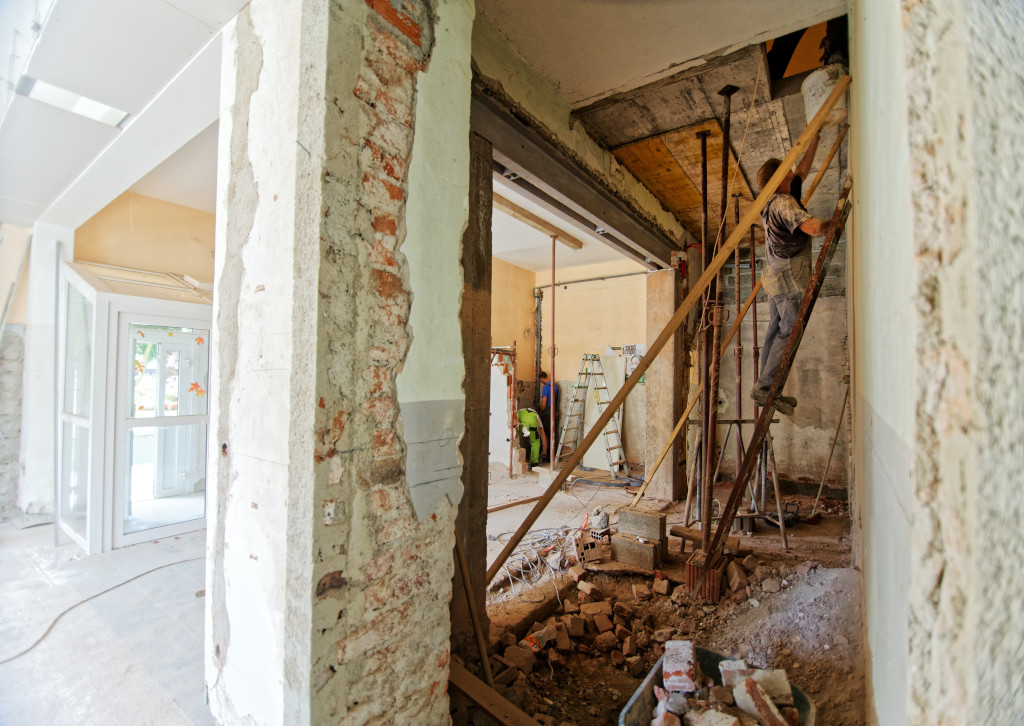
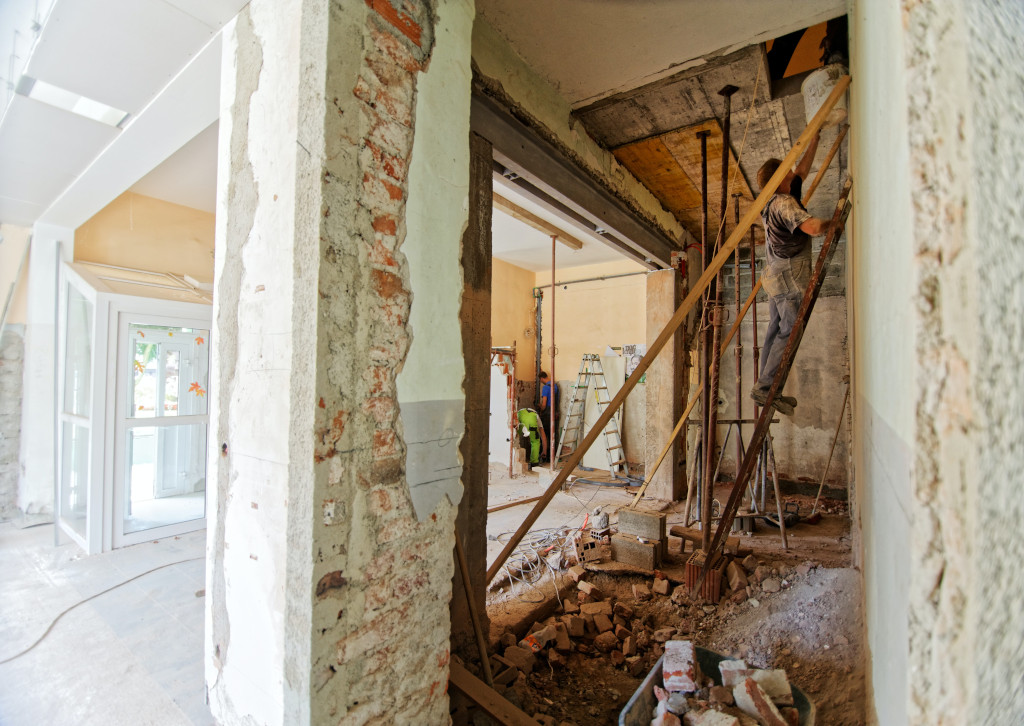
The quality of construction data matters. Here’s a look at five characteristics of good data, how to avoid some common pitfalls that lead to bad data, and how to tell the difference.
In the construction industry, we’re no longer dealing with the issue of not having access to data, but instead with a lack of information to drive decision-making. What’s the difference? While there’s no shortage of data, many firms are still learning to use that data in an insightful way. The benefits of mastering this skill are plenty; they include having a stronger competitive advantage and greater project outcomes.
Good project outcomes stem from good decision-making, and nothing affects the decisions you make on a construction job like the quality of your data. The information gathered can have an impact on everything from timelines to budgets, bid performance, and even site safety. What’s more, using bad data over the course of a project has the potential to affect your current work and future jobs. Its predictive nature can create systemic inaccuracies down the line.
All construction data is not created equal, and time spent gathering poor data is time lost. According to a new report from Autodesk and FMI, Harnessing the Data Advantage in Construction, project data has grown exponentially — doubling in the last three years. Yet not all of that project data is created equally. Roughly half of the survey’s respondents shared that “bad” project data (e.g., inaccurate, incomplete, or inconsistent data) contributed to a poor outcome for one in three project decisions. What’s more, bad project data is costly. Avoiding rework triggered by bad project data could save the global construction industry over $88 billion annually.
How do you tell the difference between good and bad project data? Let’s take a look at five characteristics of good data, how to avoid some common pitfalls that lead to bad data, and how to tell the difference.
Bad project data doesn’t come down to a single reason. Research indicates that data management solutions and the challenges the industry faces vary and are unique to each organization’s way of working. In Harnessing the Data Advantage in Construction, the most common contributors to bad project data included:
*Please check out the report for definitions
While it’s not always easy to spot the difference between good and bad data, there are a number of key attributes of bad data that can help construction professionals avoid using it in the first place.
For one thing, bad data is siloed, meaning there’s a disconnect between the systems used to access the data, and the possibility that not everyone is on the same page regarding which data is most reliable and relevant to the project at hand. Unreliability is another characteristic of bad data, and professionals can spot it by ensuring that data is not outdated and doesn’t contain mistakes. Finally, poor quality data is difficult to access, making it hard to pull up relevant project information.
Beyond identifying poor quality data, construction professionals must understand the characteristics of high quality data. Doing so not only helps to avoid wasted time but it also sets projects up for success by providing as many resources as possible. So what characteristics make for good construction data? Read on to learn more about the five attributes of quality construction data and a few resources to help you collect and use it.
The nature of data captured by the construction industry is often what is considered “heterogeneous” data, or data that has multiple variable types, (e.g., comparing apples to oranges). This type of data is ambiguous and inconsistent in the ways it measures something and what it measures that something against.
As industry data expert Jit Kee Chin shared, construction professionals must gather “a lot of information across contracts, across text documents, across drawings and across financial information. So the challenge in construction data is heterogeneity in terms of the data that we historically collect.”
With the variety of data formats available in construction, how is it possible to maintain consistency? It all starts with how data is collected. Consistent data requires collecting insights in a uniform way like adopting a common data environment, which helps create a standard platform to capture data. A common data environment typically takes the form of a digital hub, where all information comes together during a building project. Any information gathered for or about a project during any part of the process should be stored in the common data environment to ensure the consistency and accuracy of all project data.
Organizations committed to quality data typically share these three most common efforts or investments made to ensure decision-makers have access to actionable, high-quality data:
Just like clean job sites are integral to successful project outcomes, clean data is vital to ensuring the information you’re relying on is as up-to-date and accurate as possible. In fact, data cleansing — the process of reviewing all project data and eliminating data that is not currently relevant or accurate — often leaves construction professionals with only the best quality data to work with, thus elevating the likelihood of the successful completion of a job. In contrast, data that is not clean creates increased opportunities for mistakes and rework, as well as wastes professionals’ time when they must go back and search for correct information.
The first step toward achieving clean data is to fine-tune your information collection and management processes. Examining vital tasks like data entry, including how and where information is entered into a common data environment, and the controls around what information is considered clean data can go a long way to help ensure the timeliness and accuracy of the data used in a project.
When working to improve your construction data, ask yourself, “Can your team see the data in real time? Can they access it across devices like mobile, and from remote locations?” These are two of the most common issues facing construction professionals when it comes to the transparency and accessibility of data.
Quality information should be accessible and transparent to reflect what is currently happening. Even something as seemingly innocuous as a one-day lag in accuracy can lead to immense setbacks for a project. Survey respondents from the report Harnessing the Data Advantage in Construction, shared that having access to data was essential to accurate project decision-making. When asked what the greatest risk was to project decision-making, 43% said “time constraint/urgency of decision”.
The quality of project data needs to improve if project leaders are to make critical decisions in the field quickly and autonomously. Accessibility is also important for distributed teams, especially those out in the field. The ability for a team to obtain quality data across devices and locations is essential to the success of a job.
To improve the transparency and accessibility of quality data on a project, industry professionals should consider adopting connected and cloud-based construction technologies that ensure project information is always up-to-date, accurate, and accessible across devices, locations, and project phases.
Let’s say you have consistent, clean data that can be accessed universally across team members’ devices and locations. Oh, and that data transparently provides up-to-date information about a project. What more could you want?
Usability. Usability is a major factor in whether this data can actually be put to work to solve real problems you might face on the job. Good data can be used to inform work decisions as well as to solve both present and future issues that may arise on the job.
To help support your project staff over data management and analysis, make sure you have a formal data strategy in place. This framework will help to alleviate burdens on busy supervisory staff, and improve data consistency moving forward. Formal data strategies combined with data-rich environments could reduce the number of delayed or poor decisions, saving the industry $50 billion annually.
Furthermore, adopting solutions with advanced analytics and machine learning can provide insights for both today and the future that can improve project outcomes. According to McKinsey & Company, quality data “increases in usefulness and generates a competitive advantage as it increases in analytical richness” or, put another way, data that does the work of enhancing the quality of available information in the most efficient way possible—on its own. Moreover, companies that use machine learning and other advanced tools like predictive analytics and simulation modeling are best positioned to make the most effective data-driven decisions throughout the entirety of a project.
The final attribute of good construction data is connectivity — ensuring that information does not live in silos and shares a common access point among team members. Most projects involve a constant flow of information that originates from multiple stakeholders and takes a variety of formats. Back in the days of paper documentation, data connectivity was nearly impossible, and miscommunication was common. Even now, when more projects than ever are digitized, construction professionals are facing connectivity issues regarding the data they gather and use during a project.
To avoid the risk of siloed data, which can lead to communication issues, all project information systems must interoperate, with common access to critical information and documentation across the entire workstream. One way to achieve this is through integrated construction technology, which helps different data systems communicate and work together. This integrated approach to data is vital to connecting and automating workflows to improve project efficiency.
Don’t settle for less than high-quality data. High quality construction data can save time, improve teamwork, and greatly contribute to a project’s overall success. Spotting the difference between good and poor quality data, and ensuring that the information you’re using for a project is consistent, clean, transparent, accessible, usable, and connected might sound like a heavy lift.
Nevertheless, adopting a formal data strategy can make a huge difference when it comes to promoting a good project outcome, a happy team, and an efficient work process. What’s more, putting quality data standards in place through advanced analytics and other innovative construction technologies can set you up for success not just now but also in the future.
Start building managing your data more profitably with the 4-step process revealed in our latest report, Harnessing the Data Advantage in Construction, made in partnership with FMI. Download the data strategy checklist here.
The post 5 Attributes of High Quality Construction Data appeared first on Digital Builder.
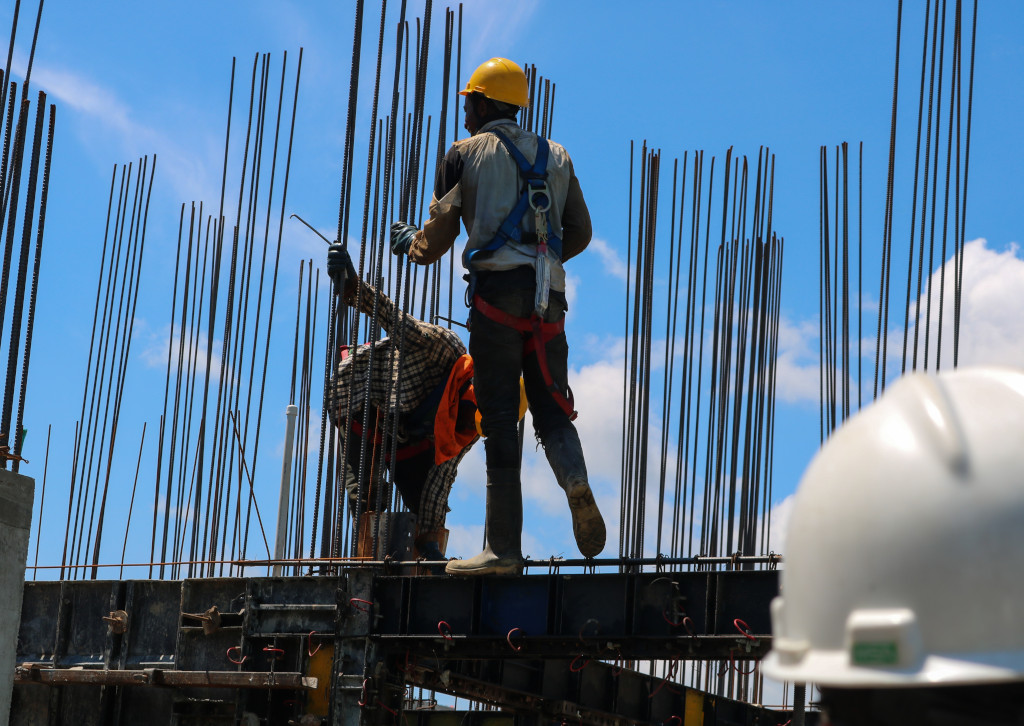
At the core of successful construction projects, you’ll find clear communication and continuous collaboration. Yet from 2012 to 2015, just 25% of projects came within 10% of their original deadlines. It isn’t uncommon to encounter bottlenecks as a BIM manager, especially during the preconstruction phase. This is especially true when issue identification, assignment, and tracking are managed by a single person.
In order to accelerate the design and coordination phases, architects, engineers, BIM managers, and trades must have the ability to identify and track issue resolution. Best case, this is all in the same solution when they review designs or create packages.
Likewise, upfront issue detection is essential to construction project success. Issues that occur during the design and preconstruction phase may only cost a few thousand dollars to resolve, while those discovered in the field can cost tens, if not hundreds of thousands of dollars to mitigate.
With that in mind, Autodesk Construction Cloud now has Design Issues in Autodesk BIM Collaborate’s Design Collaboration Module. Issues in design collaboration can be tailored to suit your team during the WIP phase or when sharing packages with other disciplines. These issues are accessible across teams, phases, and desktop applications through a common data environment (CDE) to extend the lifecycle of an issue beyond just WIP.
Instead of having to wait for a coordination meeting, or for a BIM manager to identify issues, project teams can identify and resolve issues as they design. Doing so will save time, as WSP Canada found. The engineering consulting firm used a check-as-you-go method in Revit Cloud Worksharing, which is a part of BIM Collaborate Pro. This saved the BIM manager 20-30% (conservatively) of the time it took to find and assign issues. They have since moved to using this method on over 15 projects.
In the context of an aggregated model, as you evaluate your team’s designs in a WIP folder, cloud-based issue resolution accelerates the design phase and provides better visibility into the constructability of a model across disciplines. Here’s what you can expect from Design Issues:
Conducting file transfers from authoring tools to collaboration or coordination tools and back takes up plenty of time and slows down productivity. Some firms use third-party applications to deal with this non-optimal task. However, these applications don’t natively resolve issues and add more cost while the data gets stuck without the use of a CDE.
That’s why it’s key to be able to resolve issues with a common data environment inherent to the whole eco-system. When issues arise, firms can address them in the tools they already know—like Navisworks and Revit. They also have a running record of issue occurrences and resolution status across disciplines. When an issue gets resolved, the decision details are stored to better predict future builds or provide greater context for field teams.
By resolving issues in a common data environment, Morgan Sindall Construction found a 78% reduction in synchronization of uploading and downloading models. The firm also generated a 67% reduction in design team meetings by addressing issues in the 3D model.
With Design Issues in Autodesk BIM Collaborate, you can recapture time spent chasing documents and drafting follow-up emails.
Consider that 66% of general contractors carry added costs from overtime or second shifts on at least 75% of their projects due to schedule slippage. 50% of these contractors need to extend the project end date as a result.
When multiple teams can create, assign, review, and resolve issues all in the same place, work is completed faster. With Design Issues, the same issue created in the design phase can be accessed, contextualized, and resolved in other connected applications.
You can resolve issues in Revit, take a closer look with Navisworks, or use simple automations in Model Coordination to check changes to the model. By surfacing the very same issues in Autodesk Build, a multi-directional link is created between design, coordination and field issues. This makes RFI creation easier and more detail rich.
An architect creates an issue in design collaboration. While performing a visual inspection of their design against a structural model, they’re unsure whether the issue will have an actual effect on the constructability of a design, so they assign it to the BIM manager.
The BIM manager then runs a sophisticated clash test in Navisworks and provides a solution.
The architect then jumps back into Revit to make the adjustment and double check their work using an easy-to-use, automatic clash detection tool in Model Coordination. They resolve the issue.
Now, the general contracting firm and its manager can review the closed-out issues using a dashboard and better predict schedule improvements.
The project manager can now look up the history of the issue and see why certain changes were made to the design and follow the thread of communications.
No two projects are ever the same. Some adhere to traditional ways of working while others look to different delivery models. According to FMI, 58% of owners have used or plan to use design-build, moving away from traditional design-bid-build. As the design-build trend continues, the importance of strengthening your relationships with project partners will continue to grow.
Communication, accountability, and trust are essential to building upon those relationships. These three qualities are made easier with end-to-end collaboration tools. Case in point: 43% of high trust construction companies make collaboration central to how they work. The new Design Issues feature will help to clearly define problems and provide for better communication to achieve timely resolution. These issues may be as simple as identifying an unintended design element between teammates, or address recurring issues across the organization. In either case, up-front communication has a cascading effect on downstream workflows to prevent risk and consistently deliver quality models.
You can explore our newest feature and Autodesk BIM Collaborate with a free trial.
Reach out for a demo today.
The post Faster Resolution of Design Issues with New Feature in Autodesk BIM Collaborate appeared first on Digital Builder.

Today, construction companies have more choice than ever before when it comes to technology. Not only are software solutions proliferating construction businesses, but innovative hardware is becoming prevalent on the jobsite.
Twenty years ago, technology-forward companies were setting up infrastructure to have laptops and internet at jobsites. Ten years later, we saw smart phones and tablets becoming an industry standard. Now, wearables and extended reality (XR) devices are becoming increasingly common on jobsites.
One company providing these wearables is RealWear, delivering ruggedized wearable, hands-free assisted reality devices (on the XR spectrum, but closer to physical world) to improve safety and efficiency. And Permasteelisa Group, is one of those innovative companies driving technology forward. Permasteelisa Group is a global leader in the engineering, project management, manufacturing, installation and after-sales service of advanced building facades, architectural envelopes, and interiors.
Part of Permasteelisa’s promise to its clients is to leverage integrated and digitized processes that help ensure high quality and safety while improving management of the large amount of information that characterizes modern curtain wall projects. Permasteelisa has used Autodesk Construction Cloud products for many years to connect design and field teams to solve challenges posed by “free-form” projects such as the Guggenheim Museum in Bilbao or the Olympic Fish in Barcelona.
Permasteelisa Group specializes in curtain wall projects, where there are multiple control activities that must be carried out on exposed areas, or in some cases, on the floor edge at considerable heights and in confined spaces, where handling a tablet can be dangerous. The need to access information and capture notes is still present on projects like this, but it is also crucial to maximize the safety of workers on site.
In a recent press release, RealWear announced a new and exciting integration with Autodesk® BIM 360 , built in collaboration with Permasteelisa, to solve exactly that challenge. The result was a connected, multimedia device that allows repetitive control operations to be carried out onsite using voice commands, keeping the operator’s hands free for the work. The integration with BIM 360 has helped them optimize time spent in high-risk spaces on the jobsite, reduce the risk of errors, and improve collaboration between all different stakeholders.
, built in collaboration with Permasteelisa, to solve exactly that challenge. The result was a connected, multimedia device that allows repetitive control operations to be carried out onsite using voice commands, keeping the operator’s hands free for the work. The integration with BIM 360 has helped them optimize time spent in high-risk spaces on the jobsite, reduce the risk of errors, and improve collaboration between all different stakeholders.
“Running BIM 360 on a RealWear device will be a gamechanger, keeping us on the cutting edge of technology and innovation,” said Gordon Earle, Group Operations Executive, Permasteelisa Group. “We are excited to deploy the devices to empower and retain our best workers by outfitting them with a full solution that will make them safer and more productive, delivered by two of the leading technology players in the field.”
The primary reason Permasteelesa approached RealWear to develop the integration was to enable the execution of hands-free checklists. With this seamless integration, the team can inspect the quality of a curtain wall project while at great heights and maintain employee safety, helping to ensure safe quality deliveries for their clients.
With this integration, teams can now also hands-free videoconferencing and live sharing of high-resolution images or videos. The project’s field team can bring their colleagues from the other side of the world with them to the construction site for a virtual general inspection or to observe a specific detail.
“Delivering BIM 360 on the RealWear HMT-1 hands-free assisted reality device means that worker safety is enhanced,” says Gordon Earle. “During the pandemic, this has also helped us limit travel as much as possible, which has been crucial to mitigate the virus and keeping our teams safe.”
Looking to the future, leaders at Permasteelisa also see this as a great way to avoid international travels for simple, half-day meetings on site that can now be executed virtually with a wearable.
The advantages, in terms of collaboration and efficiency gains from an integration like this, are evident. For example, the Senior Designer of a project can check the construction site as soon as a potential issue emerges, in real time—resolving field issues remotely from the office. Travel times have been significantly reduced, keeping projects moving forward more efficiently. The video conferencing also allows a seasoned manager to scale across multiple projects and teams, by avoiding in-person meetings. Teams located in different countries can work in real time, favouring collaboration across the different time zones. Thanks to the integration of BIM 360, RealWear HMT-1 and Permasteelisa’s internal systems, the information captured by the field team is immediately available to colleagues, regardless of location.
If you’d like to learn more about the RealWear and Autodesk BIM 360 integration, you can check out their RealWear’s press release here.
The post How Permasteelisa Deploys Hands-free Construction Management appeared first on Digital Builder.
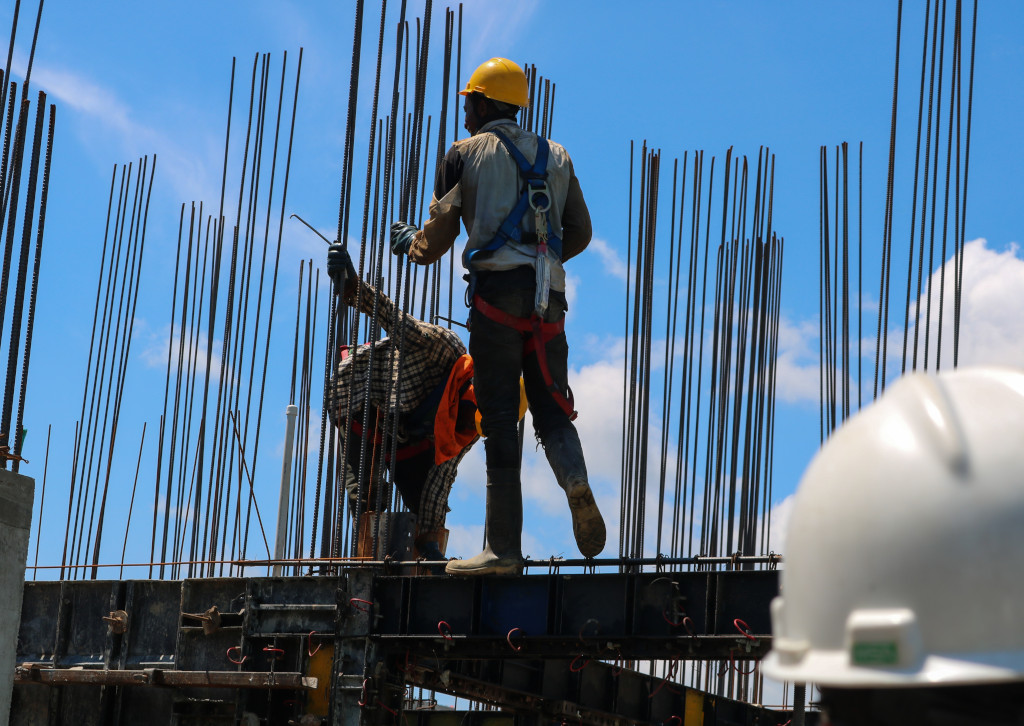
The Ministry of Justice has unveiled plans to build two new prisons on land around an RAF air base in Essex.
New Category B and C prisons, each containing 1,715 inmates, are being proposed to be built at Wethersfield air base in Braintree.
They will each follow the new standardised designs, consisting of seven separate house blocks each rising to four floors with 240 inmates in each block.
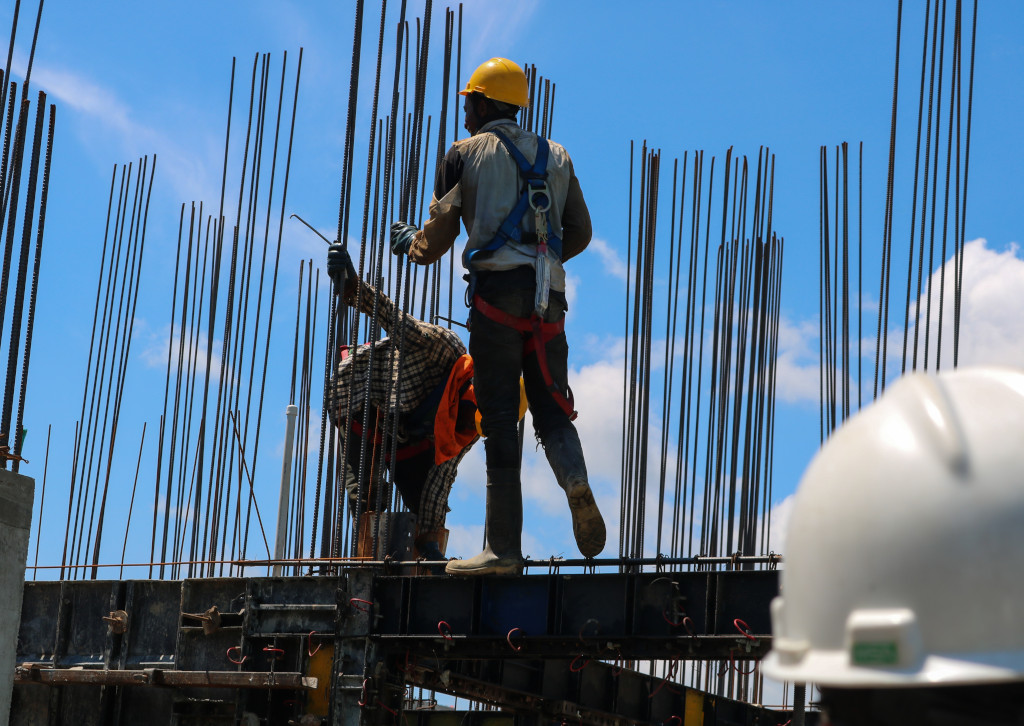
Each prison will also have support buildings. These will include a reception area, kitchens, workshops, a visits hall and offices.
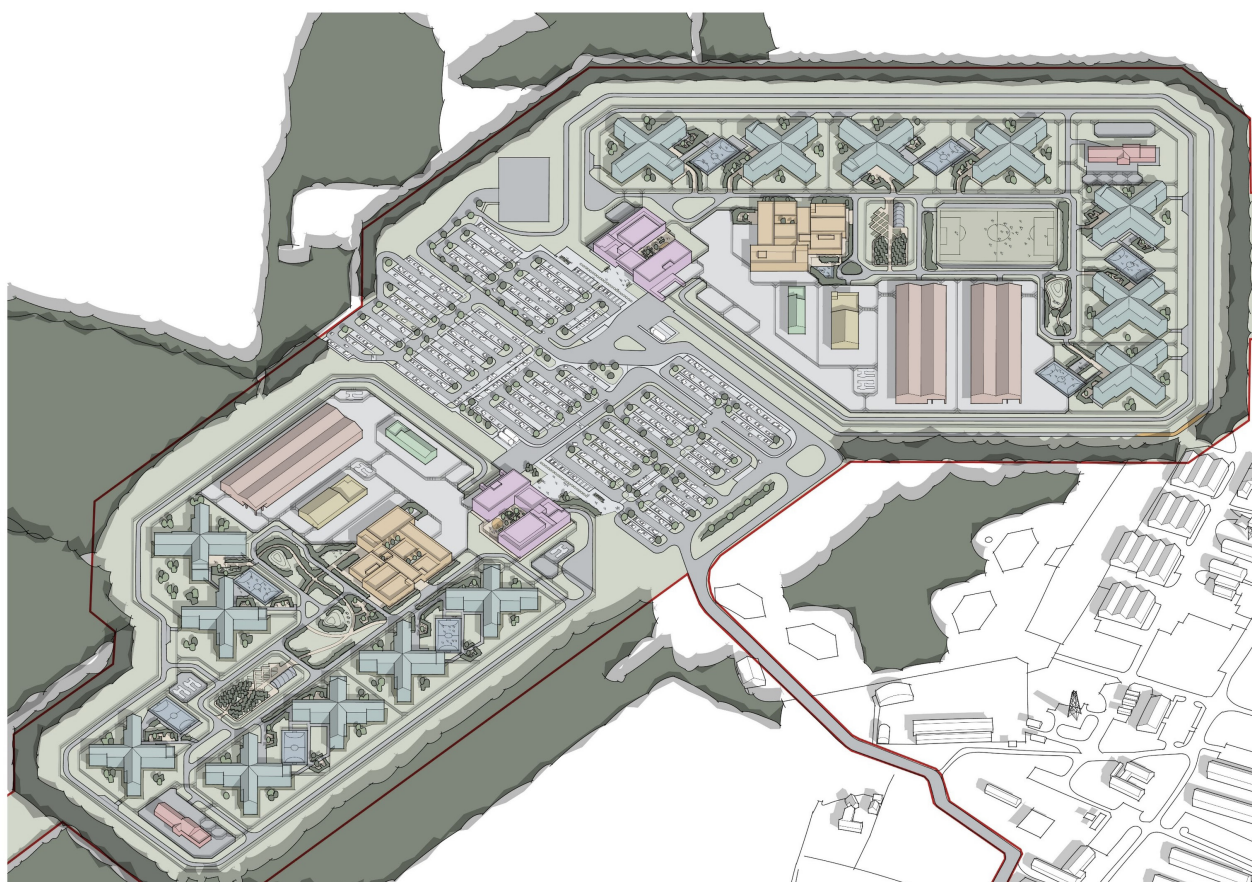
Wethersfield air base double prison plan
In local community consultation papers, newly-appointed prisons minister Victoria Atkins said: “We believe that, following detailed feasibility work, land next to Wethersfield air base would be a good location for two new prisons as part of the prison estates strategy.
“Our plans, if successful, would bring many benefits to the local community, such as hundreds of jobs during construction, careers within the prison sector and an increased spend in local businesses.”

If a decision is taken to proceed, planning permission will be sought next year.
The Government has committed to creating 18,000 additional prison places by the mid-2020s’, through a combination of building new prisons, as well as extending, refurbishing and maintaining existing prisons.
Four are planned as part of the Ministry of Justice’s £1bn New Prisons Programme.
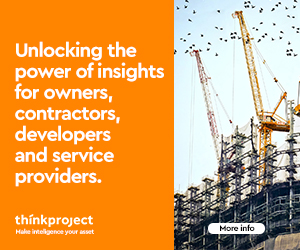
These will be delivered by a framework of preselected contractors: ISG, Kier, Laing O’Rourke and Wates.
Earlier this month, MoJ submitted plans for a major new prison in Lancashire adjacent to HMP Garth and HMP Wymott near the town of Leyland.
Other prisons in the pipeline include Full Sutton, in the East Riding of Yorkshire, another new category c prison planned on land adjacent to HMP Grendon and HMP Springhill in Buckinghamshire.


Did you miss our previous article…
https://www.cmcconstruction.net/?p=868

Met Police and officers in Romania arrested 13 men on Tuesday morning in a series of raids as part of a major investigation into human trafficking.
Following the raids 54 men and one male juvenile have been safeguarded.
The investigation was launched by detectives from the Met’s Specialist Crime Command in August 2019 after intelligence highlighted a Romanian organised crime group (OCG) operating between Romania and the UK.
Romanian adult nationals have been recruited and trafficked to the Kingsbury area of north London to work on building sites as unskilled labourers.

Four warrants were executed in Harrow and Brent. Cash and a firearm were also seized.
The males were found housed in multi-occupancy addresses with mattresses covering the whole floor space. Occupants were found sleeping in extremely cramped conditions. They are now receiving support from specialist officers.
Eight men have been arrested in London for human trafficking. They have been taken to a north London police station.

A further five men were arrested in Romania where gold and around 250,000 Euros were seized from the OCG.
Those arrested are aged between 22 and 49 years old. They have been arrested for a variety of offences, including causing another to complete forced or compulsory labour and human trafficking contrary to the modern slavery act 2015.
Detective Constable Dec Wilson, from Central Specialist Crime, said: “These arrests in the UK and abroad are the result of working closely with our partners in Romania for the past 18 months, to identify those involved in the human trafficking and labour exploitation.

“This Eurojust Joint Investigation Team should serve as a warning to other organised crime networks that the Met is committed to working with international law enforcement to target those committing modern day slavery offences in London.
“We need the public’s help as they have an important role to play in recognising and reporting modern slavery. If you suspect someone may be a victim of modern slavery, report it. You will always be taken seriously, and protection and support is available.
“Often those affected do not see themselves as potential victims of labour exploitation and many will have been coerced into this life to make money for an organised crime network.

“We believe there are victims of modern slavery in every borough across London and the public may encounter them every day, possibly without realising.
“As well as being exploited for labour, victims have been found working in construction, domestic servitude, agriculture, cannabis factories and in places you use yourself, such as car washes, barbers and nail bars.”
Police said their enquiries are continuing.


Did you miss our previous article…
https://www.cmcconstruction.net/?p=860
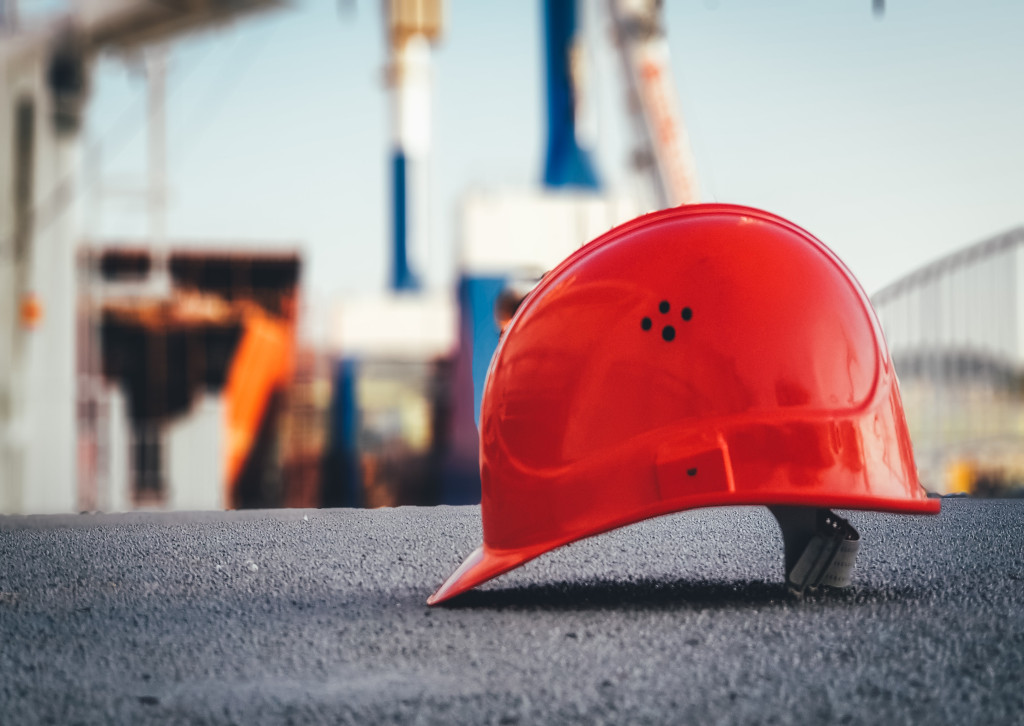
Accounting is a critical aspect of any business. But when it comes to the complex nature of construction, accounting is a whole different beast. Along with processing payroll and managing standard accounts payable and accounts receivable, the accounting team is also tasked with a number of other tasks including tracking and processing commitment changes. Because of this, accounting and the project team rely on each other to ensure information is accurate, so the project budget stays on track.
But with both parties working from different locations and typically using disconnected software to manage cost activities, they’re faced with the time-consuming task of duplicate data entry, tedious processes, and communication bottlenecks. Information silos between these essential collaborators need to dissolve, and luckily, it can by connecting the field-facing construction management software with the back-office accounting programs.
Integrations between disparate systems can be complex and rife with issues that make it expensive to maintain and support. This is especially true if an integration is proprietary and not built on a robust, scalable, and proven platform. Thankfully, hh2 Cloud Services stands apart from proprietary point-to-point integrations by bringing seamless integrations between construction ERP systems and independent software developers using their Universal Construction Model (UCM). And with this, they are bringing together Sage 300 CRE and Autodesk Build.
Dennis Stejskal, Director at Sage Construction & Real Estate Division NA shares, “We are excited to come together with hh2 and Autodesk to deliver an industry-leading integration between accounting and operations. We believe we can help construction teams be more successful through this partnership by increasing collaboration and data visibility between field-facing teams and accounting.”
Bringing the field and accounting department together at last
Want to learn more about this integration? Register at no cost for Autodesk University 2021 to join the virtual industry talk, ERP Integration for Autodesk Construction Cloud, on October 7, 2021.
Register Now
The post Where Accounting Meets the Field: Sage 300 CRE and Autodesk Build appeared first on Digital Builder.
Did you miss our previous article…
https://www.cmcconstruction.net/?p=857